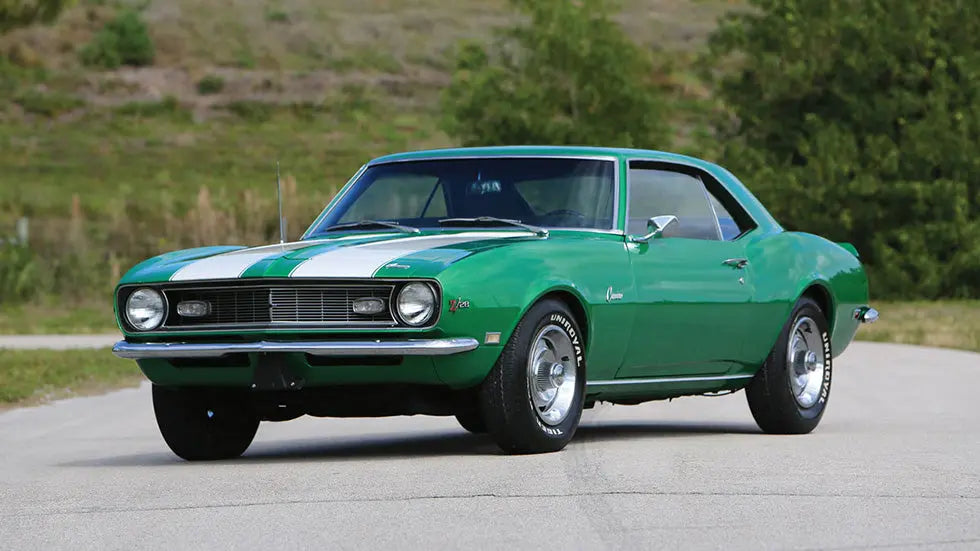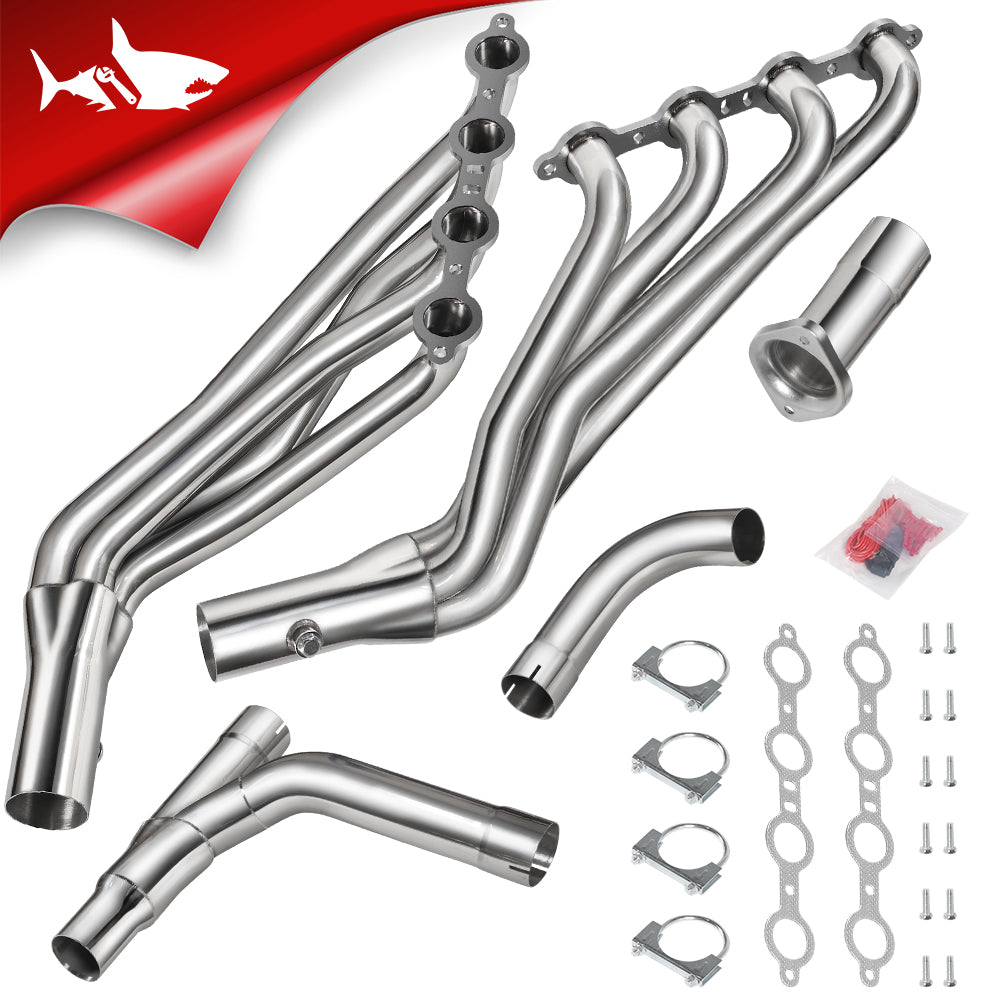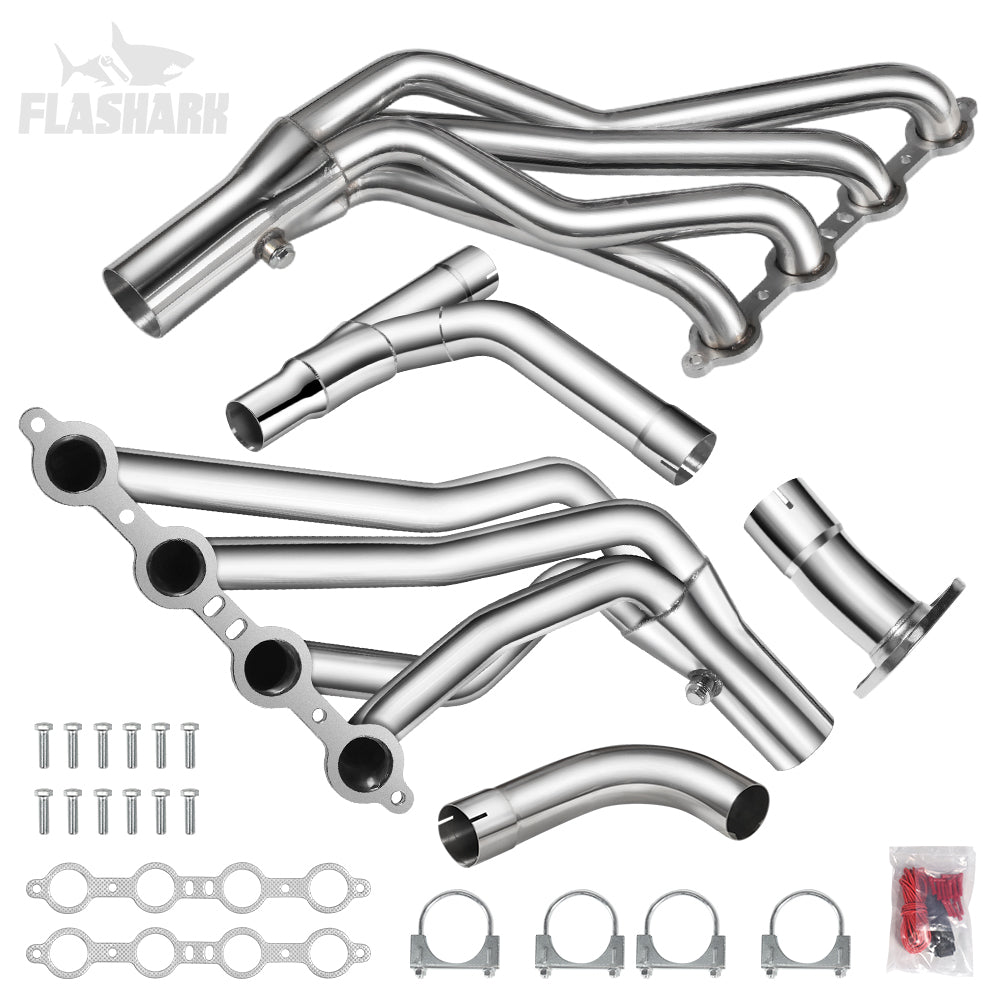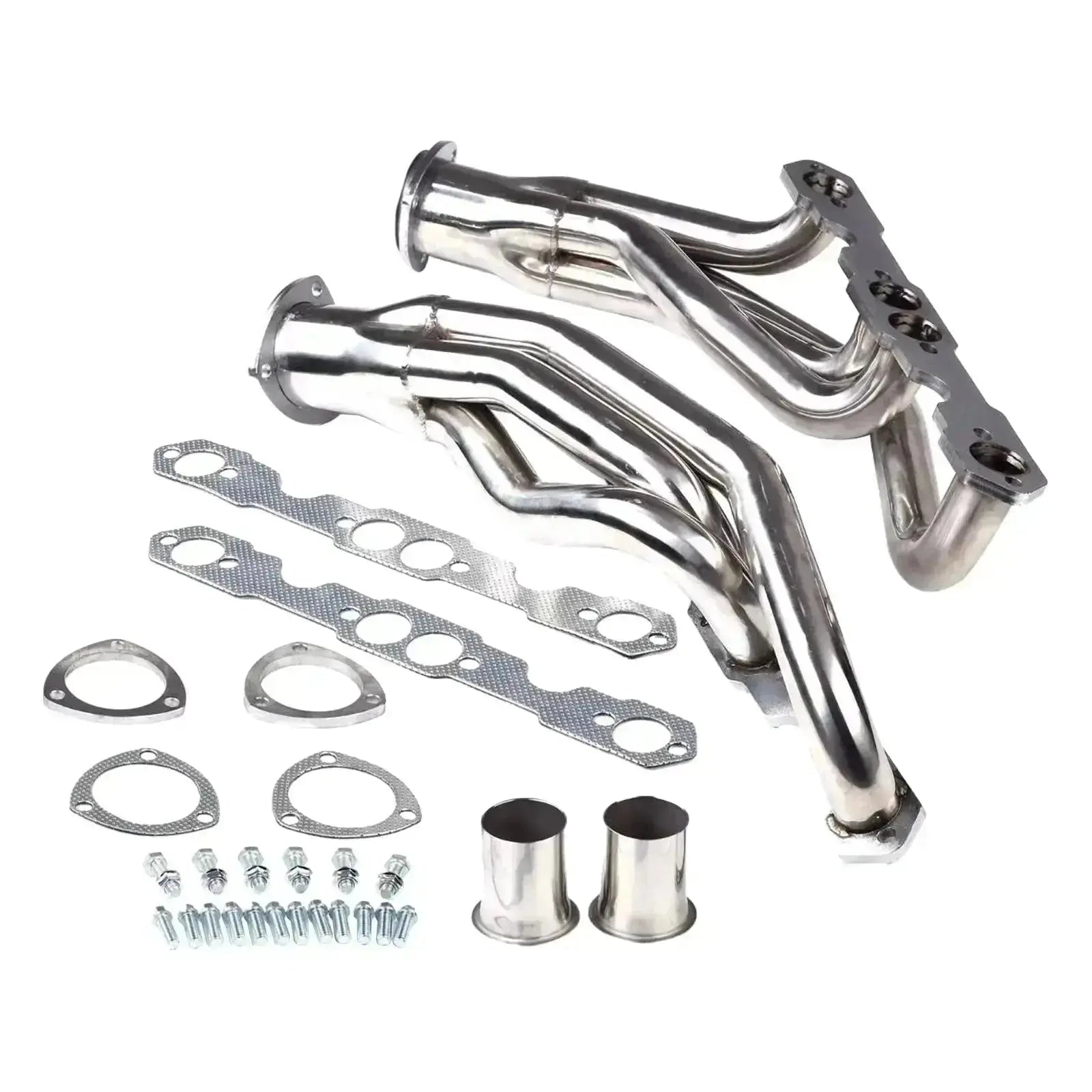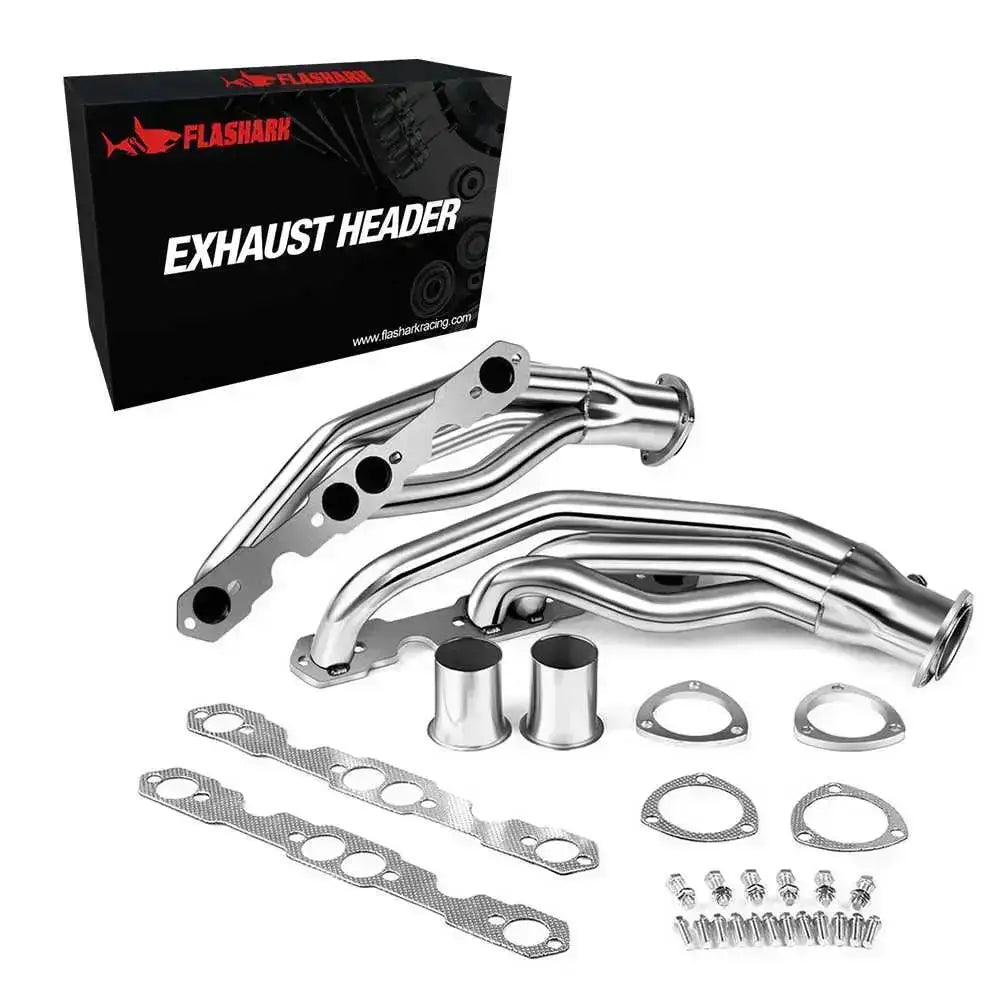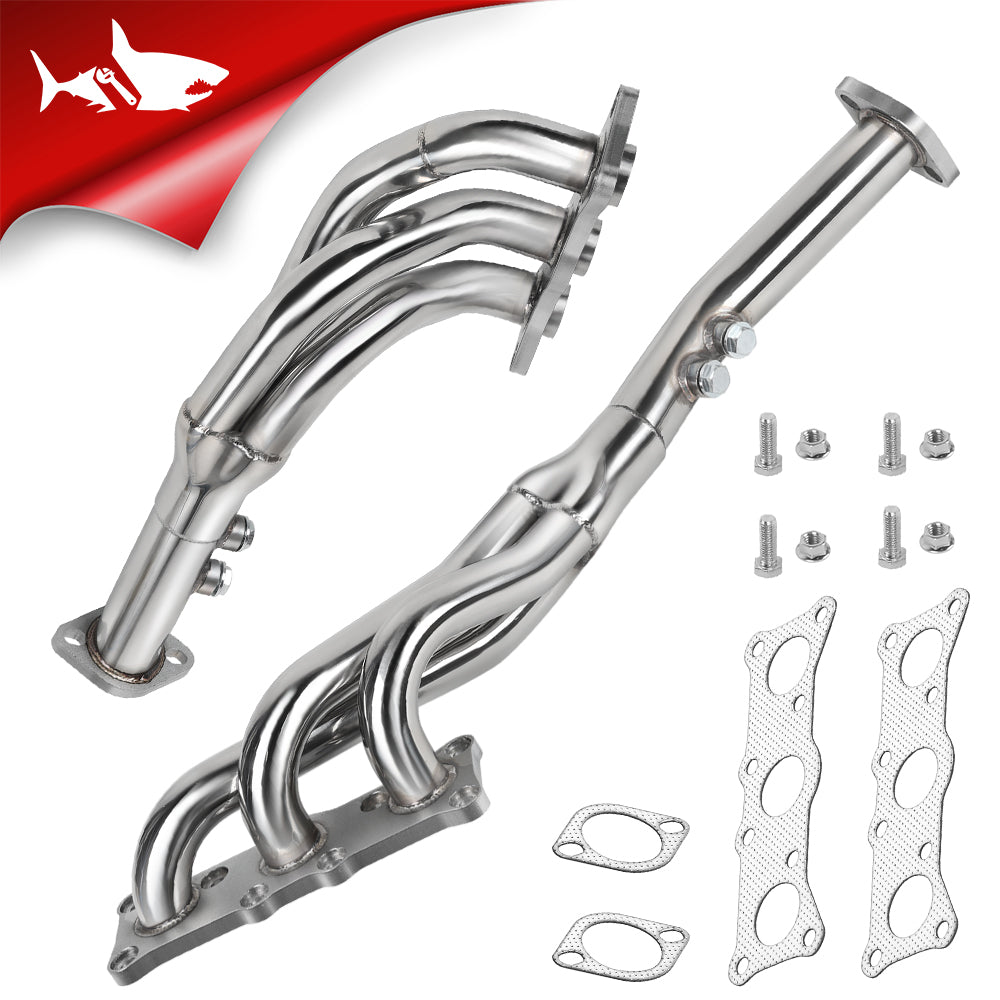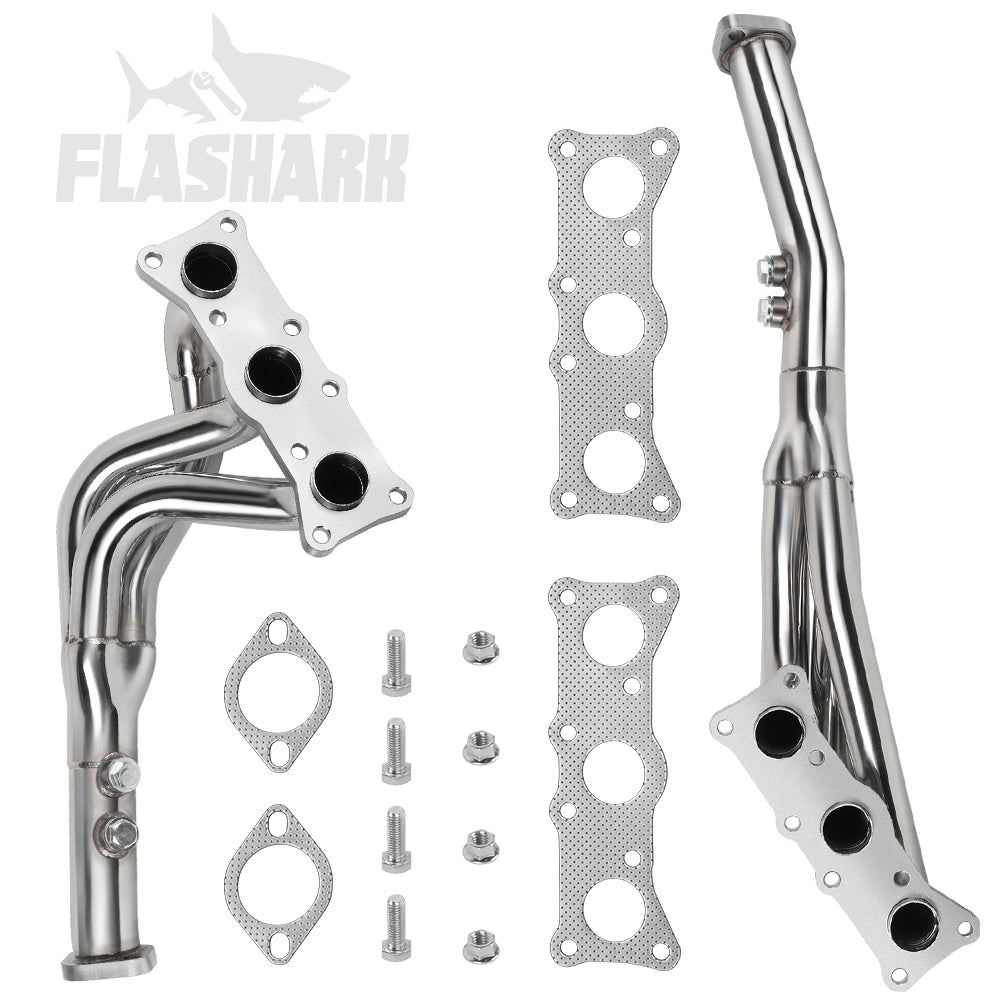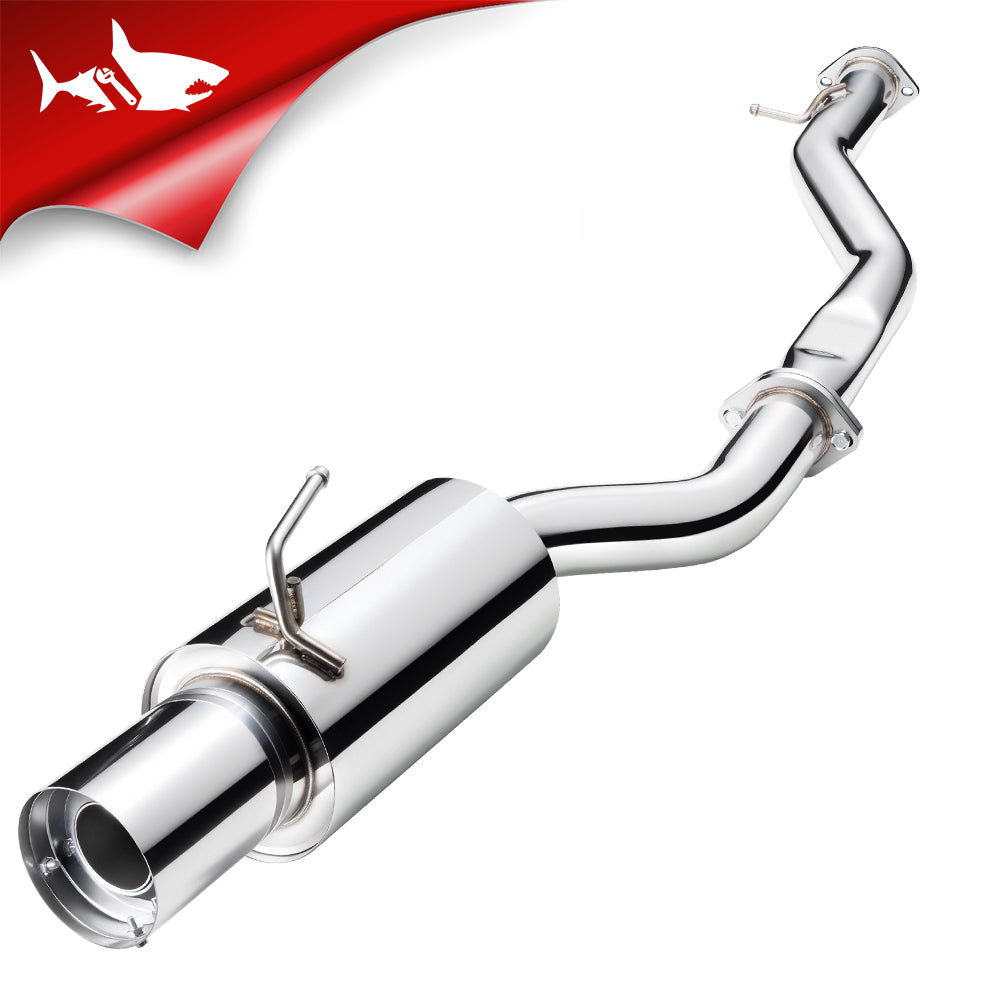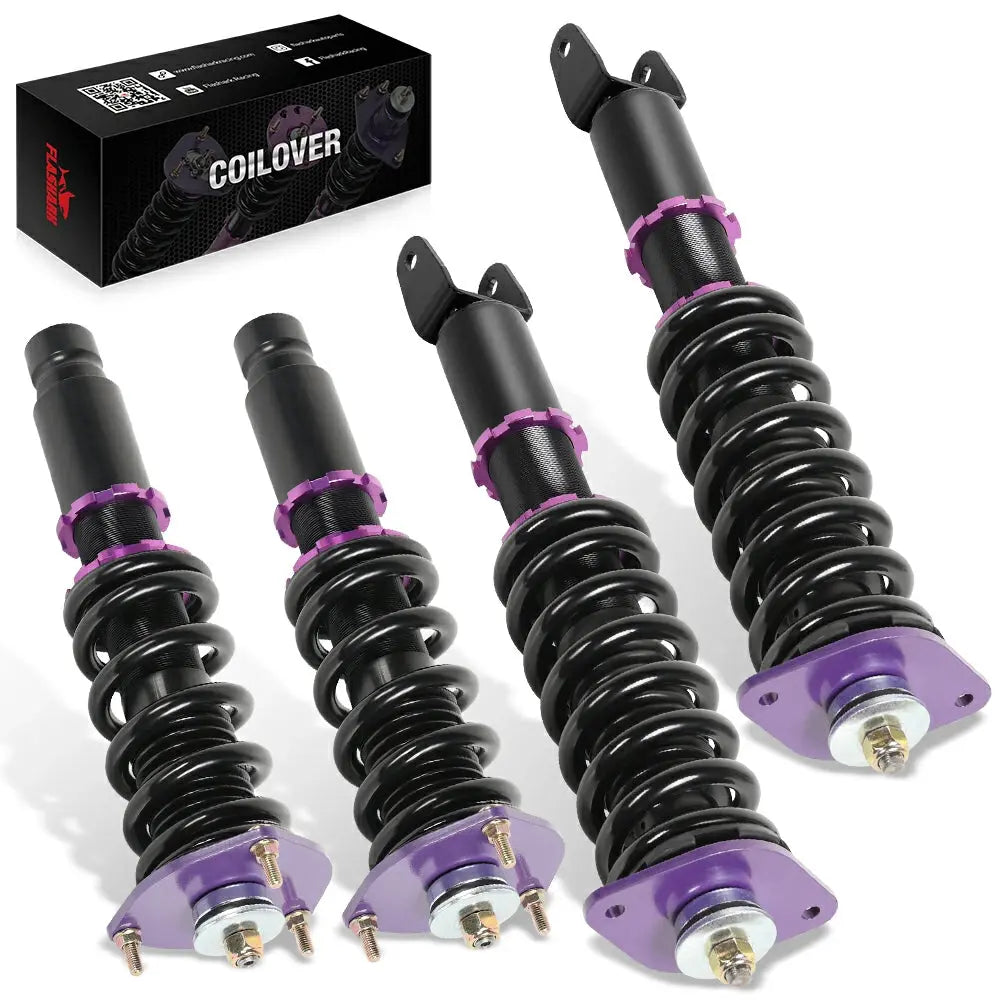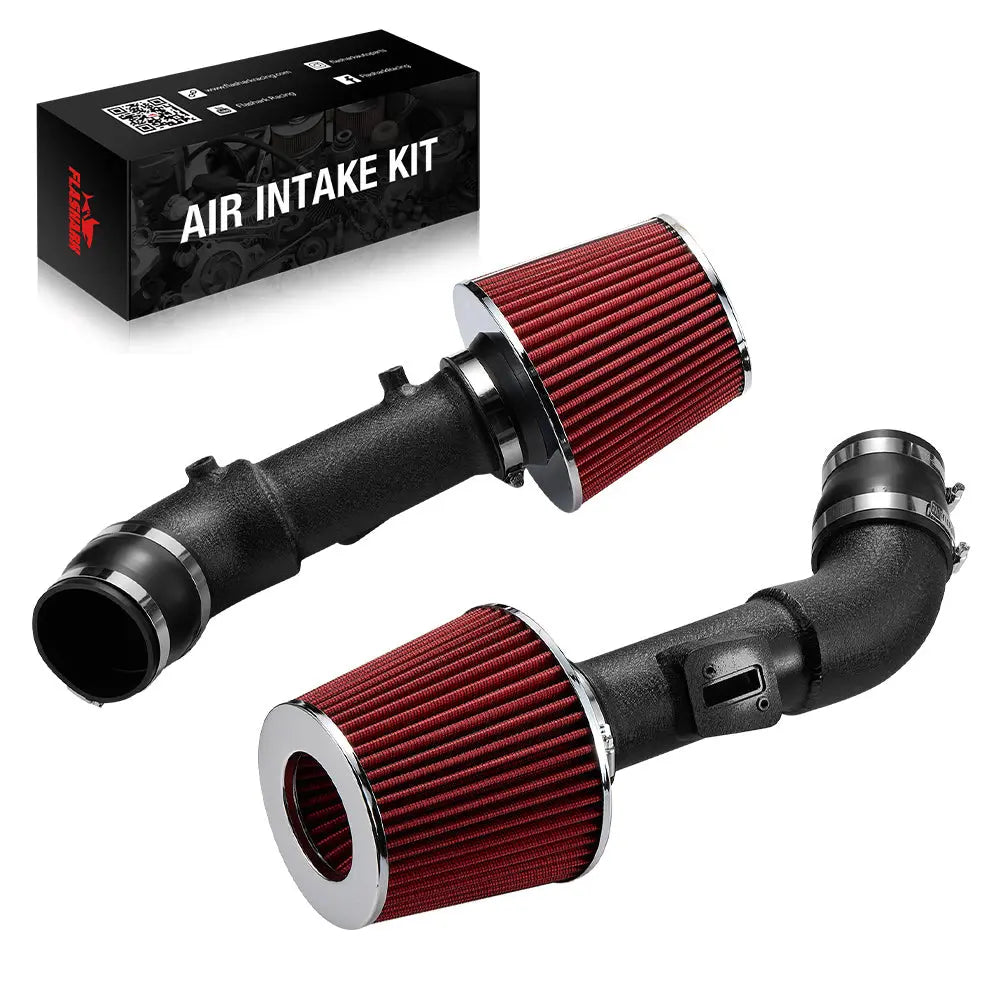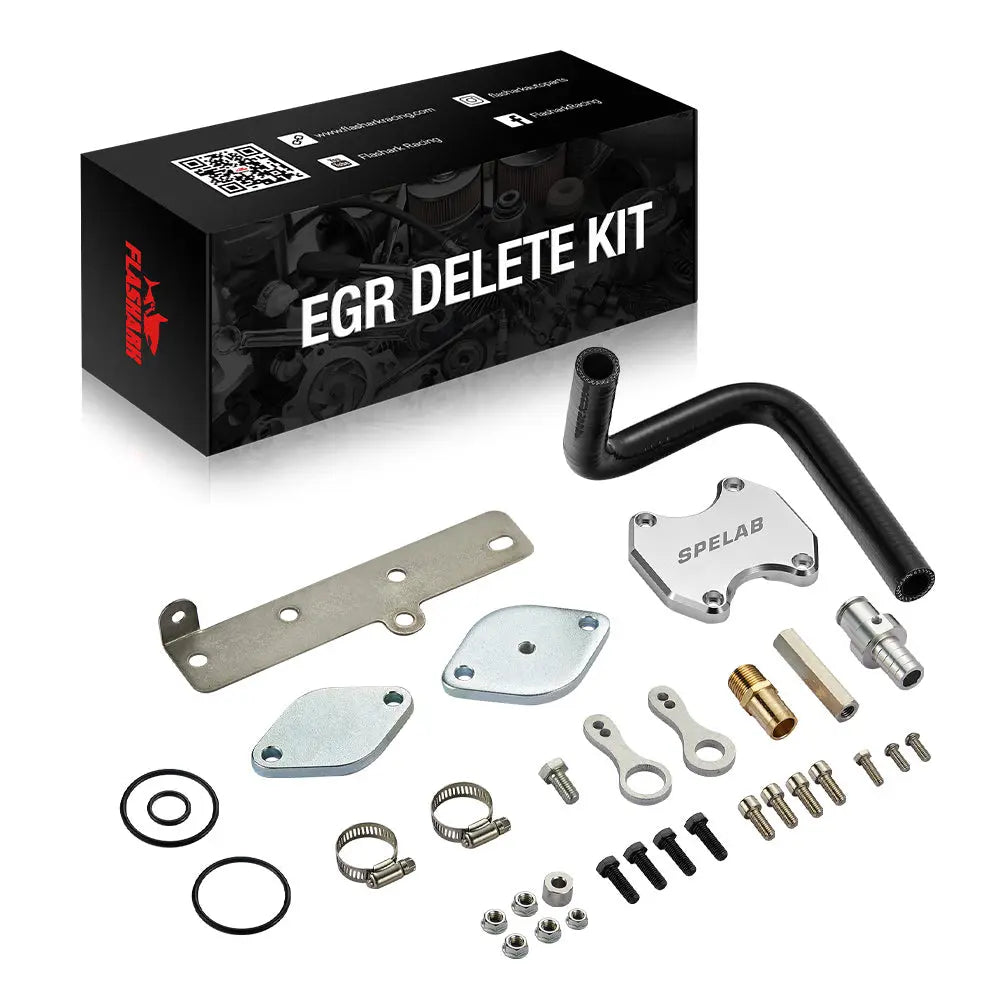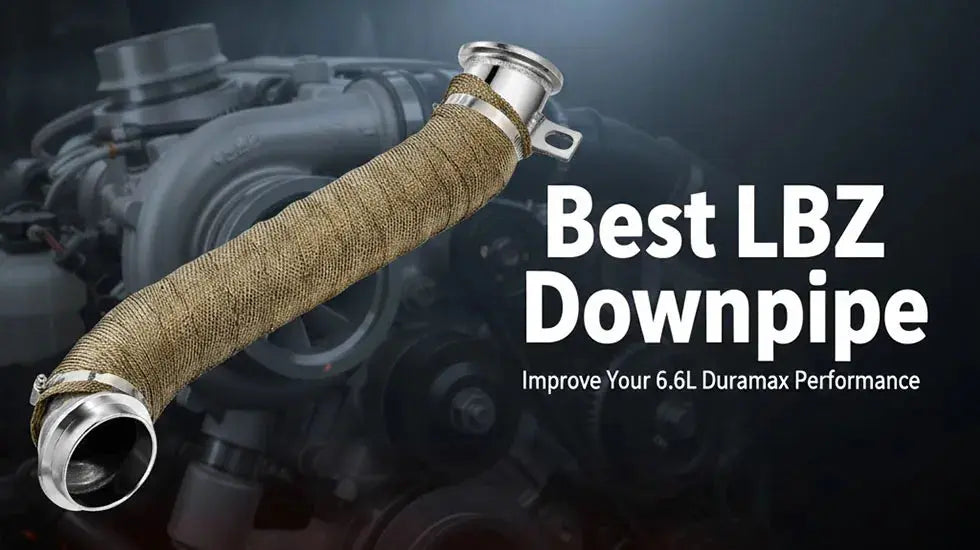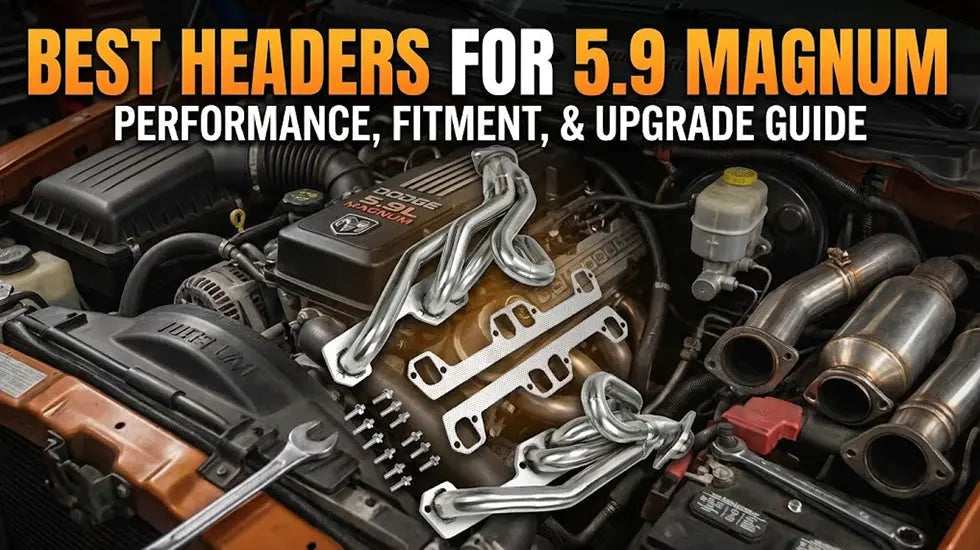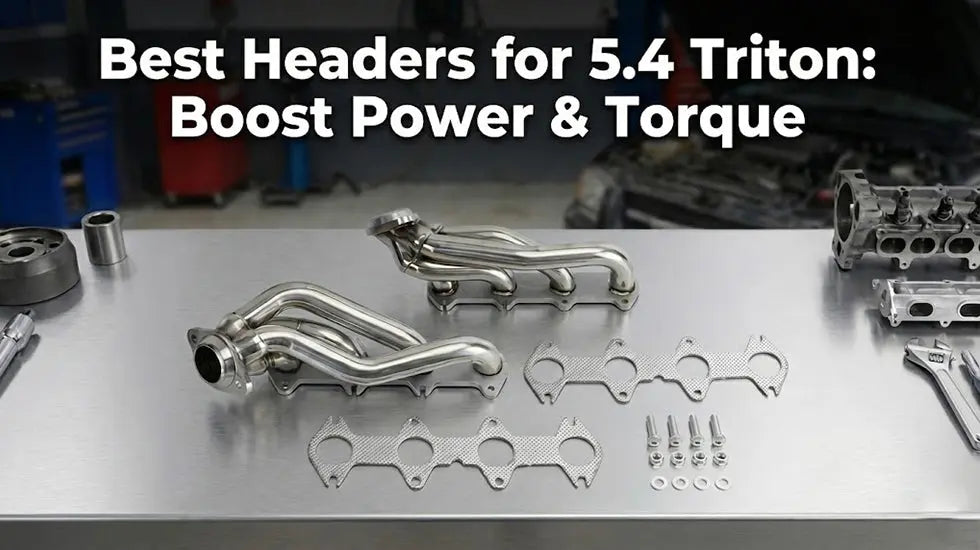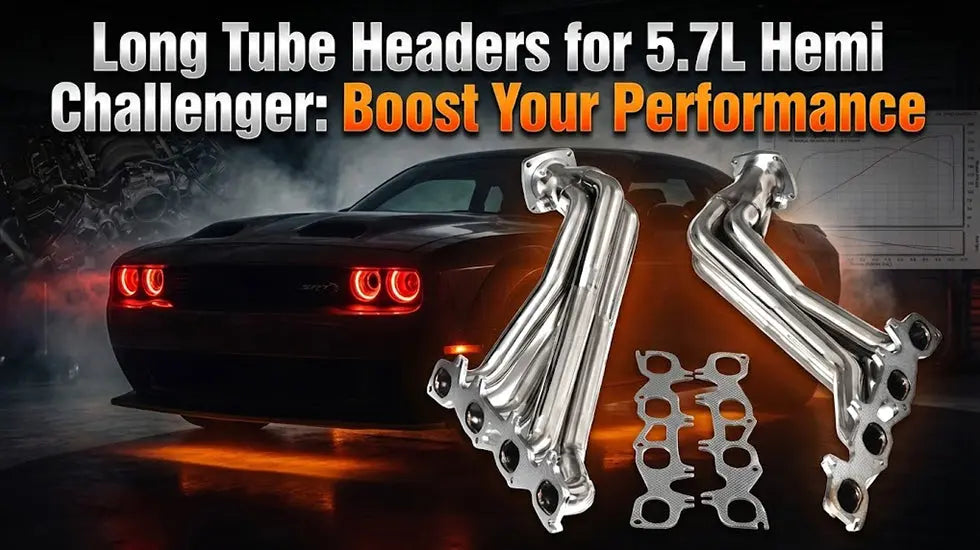Instalar colectores de escape en tu motor 350 puede mejorar significativamente su rendimiento, especialmente si buscas mayor potencia y torque. ¿Pero cuánta potencia puedes ganar con solo añadir colectores? Este artículo analiza cómo los colectores de escape afectan el rendimiento de un motor 350, los factores que influyen en el aumento de potencia y cómo puedes maximizar el potencial de tu motor.
Comprender los fundamentos de los colectores de escape y el motor Chevrolet 350 V8
El motor Chevrolet 350 V8, uno de los motores de bloque pequeño más emblemáticos de la historia del automóvil, ha impulsado clásicos como el Camaro, el Corvette y el Chevelle. Conocido por su sólida potencia base, durabilidad y excelente potencial de modificación, el 350 es uno de los favoritos entre los entusiastas del rendimiento.
Una de las mejoras más efectivas para optimizar el rendimiento del motor 350 es la instalación de colectores de escape. Los colectores de escape de fábrica del 350 suelen ser restrictivos, lo que limita la capacidad del motor para expulsar los gases de escape de forma eficiente. Los colectores de alto rendimiento solucionan este problema al mejorar el flujo de escape desde los cilindros del motor, lo que permite que el 350 «respire» mejor.
Con una menor contrapresión y una expulsión más rápida de los gases de escape, el motor funciona con mayor eficiencia, lo que se traduce en un aumento notable de la potencia y el par motor. Para quienes buscan liberar todo el potencial de un Chevrolet 350 V8, los colectores de escape son una de las modificaciones más efectivas que se pueden instalar fácilmente.

¿Cuánta potencia se puede esperar al instalar colectores de escape en un motor 350?
La pregunta que se hacen todos los aficionados es cuántos caballos de fuerza pueden añadir los colectores de escape a un motor 350. En promedio, la instalación de colectores puede proporcionar un aumento de potencia de entre 10 y 25 caballos. La cifra exacta depende del tipo de colectores, la configuración del motor y otras modificaciones.
Para un motor 350 estándar, los colectores de escape de tubo largo podrían añadir entre 15 y 20 caballos de fuerza, mientras que los de tubo corto podrían ofrecer ganancias cercanas a los 10 caballos. A medida que el motor se modifica con piezas de alto rendimiento, las ganancias potenciales que ofrecen los colectores aumentan, llegando en ocasiones a superar ampliamente los 25 caballos de fuerza.
También es importante recordar que los colectores de escape solo beneficiarán plenamente al motor una vez que este se haya ajustado para que coincida con el nuevo sistema de escape.
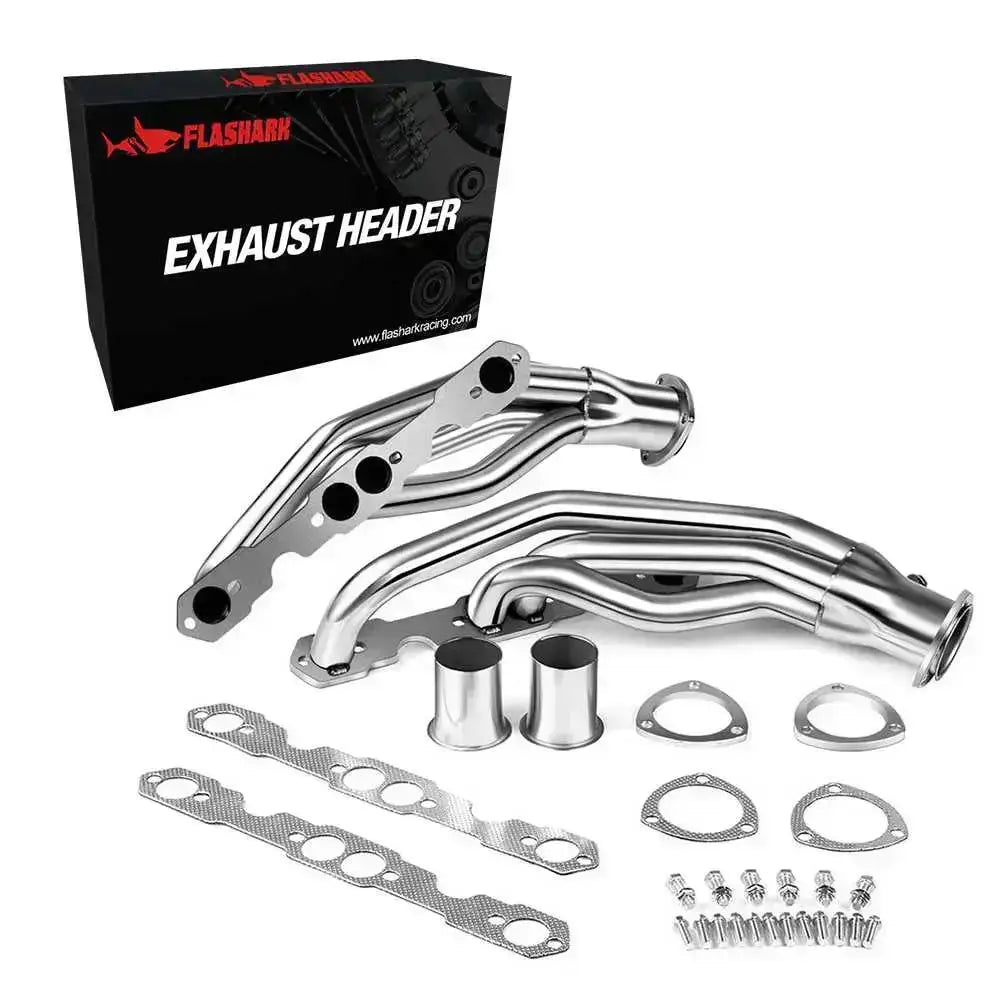
Colector de escape de tubo largo para Chevy GMC 305 350 Small Block SBC 5.0L 5.7L V8 C/K1500 C/K2500 C/K3500 de 1988 a 1997
Mejora el rendimiento y el sonido con los colectores de escape de tubo largo FLASHARK para motores Chevy/GMC 305/350 V8 de 1988 a 1997. Fabricados en acero inoxidable T304 para una máxima durabilidad y flujo.
Precio: $145
Comprar ahora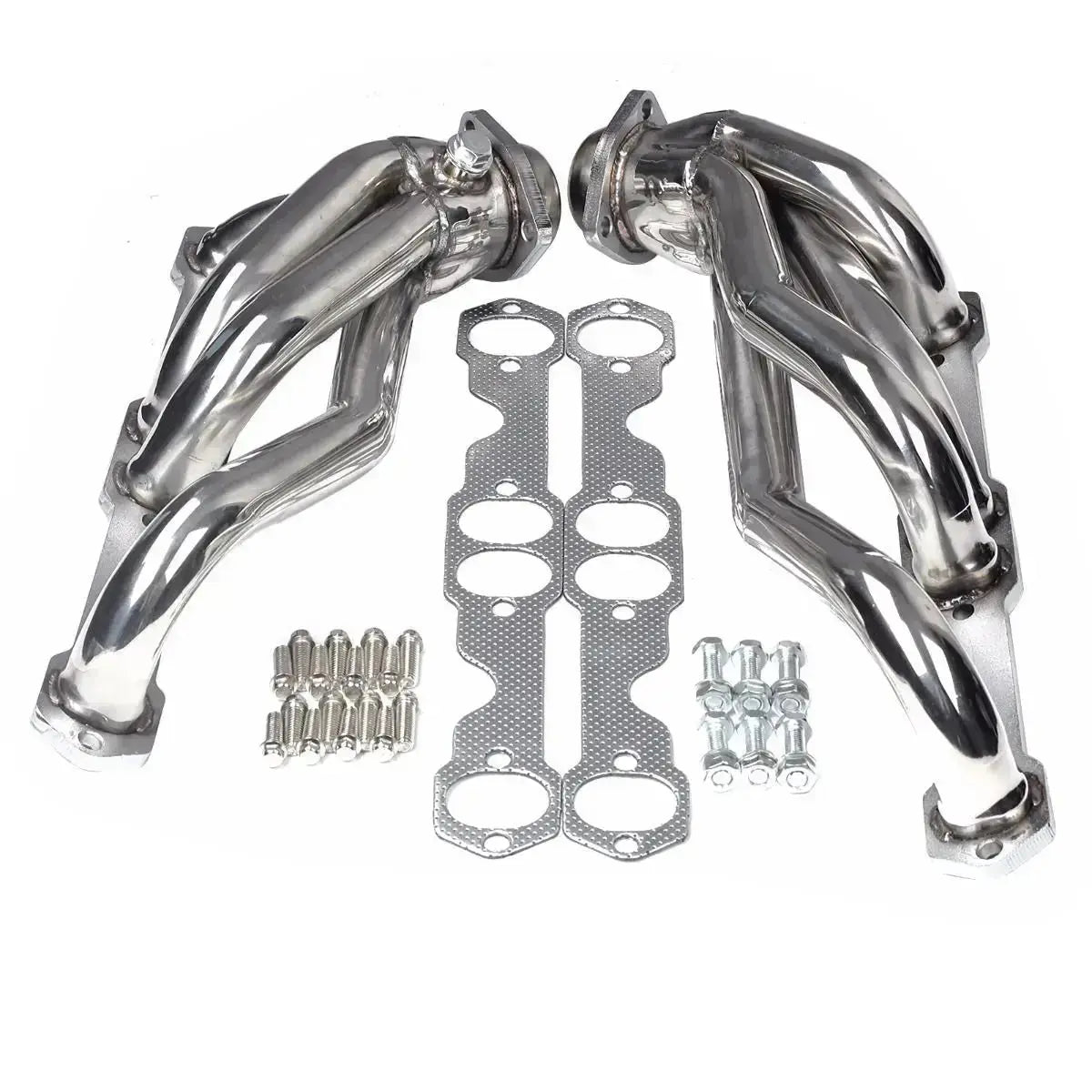
Colectores de escape cortos para camionetas Chevy/GMC 350 5.7L / 305 5.0LC/K 1500/2500 de 1988 a 1997
Colectores de escape cortos FLASHARK para motores Chevy/GMC 305/350 V8 (1988-1997): aumentan la potencia, el par motor y el sonido. Fabricados en acero inoxidable T304, soldados con TIG, fáciles de instalar.
Precio: $149
Comprar ahoraFactores que influyen en el aumento de potencia al instalar colectores de escape en un motor Chevrolet 350 V8
El aumento de potencia que se puede obtener al instalar colectores de escape en un motor Chevrolet 350 V8 varía considerablemente según diversos factores. Si bien la mayoría de las configuraciones experimentan un aumento de entre 10 y 25 caballos de fuerza , los resultados exactos dependen de la combinación del diseño del colector, la configuración del motor y las modificaciones complementarias.
Tipo de colector: Tubo largo vs. Tubo corto
Los colectores de escape de tubo largo generalmente ofrecen las mayores mejoras, ya que sus tubos primarios extendidos optimizan el barrido de los gases de escape y permiten una salida más eficiente, sobre todo a revoluciones medias y altas. Los colectores de escape cortos son más fáciles de instalar y se adaptan mejor a compartimentos de motor reducidos, pero suelen generar aumentos de potencia menores. Elegir el tipo adecuado de colectores para un motor V8 de 350 pulgadas cúbicas puede influir significativamente en el rendimiento general del motor, especialmente si se combina con otras modificaciones.
Diámetro del tubo y longitud primaria
El diámetro y la longitud de los tubos de escape deben ajustarse a la cilindrada del motor y al rango de RPM previsto. Los tubos de mayor diámetro suelen favorecer el rendimiento a altas RPM, mientras que los de menor diámetro pueden mejorar el par motor a bajas revoluciones. Un dimensionamiento correcto de los tubos garantiza una entrega de potencia equilibrada en todo el rango de RPM, lo que permite al motor V8 de 350 aprovechar al máximo el flujo de escape mejorado.
Configuración del motor y modificaciones internas
Un motor V8 350 estándar con culatas y árbol de levas de fábrica generalmente gana entre 10 y 15 caballos de fuerza solo con la instalación de colectores de escape. Sin embargo, los motores con componentes mejorados, como culatas de alto flujo, árboles de levas de alto rendimiento o relaciones de compresión más altas, permiten que los colectores funcionen de manera más eficiente, llegando a producir en ocasiones más de 20 o 30 caballos de fuerza . El impacto de los colectores se amplifica a medida que aumenta la capacidad de flujo de aire del motor, por lo que las modificaciones complementarias son cruciales para maximizar las ganancias.
Diseño del sistema de escape y contrapresión
Los colectores de escape funcionan mejor cuando se combinan con un sistema de escape adecuado. Los convertidores catalíticos y silenciadores de fábrica, al ser restrictivos, pueden limitar el flujo de aire y reducir los beneficios de los colectores. Al instalar componentes de alto flujo, el motor V8 350 puede reducir aún más la contrapresión y liberar potencia adicional, a menudo añadiendo entre 5 y 10 CV más allá de lo que se obtiene solo con los colectores.
Sistema de admisión y flujo de aire
Ni siquiera los mejores colectores de escape alcanzan su máximo potencial si el sistema de admisión del motor limita el flujo de aire. La instalación de un colector de admisión de alto flujo, un carburador de mayor tamaño o una admisión de aire frío garantiza que el motor V8 350 reciba suficiente aire para compensar la mayor eficiencia del escape. Sin una admisión adecuada, las mejoras que ofrecen los colectores de escape se verán limitadas, independientemente de su diseño.
Ajuste de la ECU y suministro de combustible
Finalmente, la puesta a punto juega un papel fundamental para lograr la máxima potencia. Ajustar la relación aire-combustible y el avance de encendido tras la instalación de los colectores de escape permite que el motor funcione con la máxima eficiencia. En configuraciones modificadas, los sistemas de combustible mejorados, como los inyectores de alto flujo o las bombas de combustible de alto rendimiento, garantizan que el motor V8 de 350 reciba el combustible necesario para complementar el mayor flujo de aire, aprovechando al máximo el potencial de potencia de los colectores.
Cómo los colectores de escape mejoran el rendimiento general más allá del aumento de potencia
Si bien la potencia suele ser el principal objetivo, los colectores de escape de alto rendimiento para un motor Chevrolet 350 V8 ofrecen ventajas que van mucho más allá de las cifras de potencia máxima. Al mejorar la eficiencia del escape y reducir las restricciones, los colectores optimizan la respuesta y la facilidad de conducción del motor.
1. Mayor par motor a bajas revoluciones: Los colectores de escape mejoran la evacuación de los gases, lo que ayuda al motor V8 de 350 a generar más par motor a bajas revoluciones. Esto se traduce en una aceleración más contundente desde parado y una mayor capacidad de tracción.
2. Mejor respuesta del acelerador : Con una menor contrapresión, el motor reacciona más rápidamente a la presión del acelerador. Los conductores suelen notar una respuesta más inmediata al acelerar, lo que hace que el coche se sienta más ágil en la calle.
3. Entrega de potencia más suave y mayor eficiencia : Al mejorar la eficiencia de la combustión, los colectores de escape pueden ayudar a que el motor funcione de forma más suave en todo el rango de RPM. En algunos casos, esto también puede generar mejoras marginales en el consumo de combustible, especialmente si se combina con una puesta a punto adecuada.
Elegir los colectores de escape adecuados para su motor 350
Elegir los colectores de escape adecuados para tu motor 350 es fundamental para lograr el mejor rendimiento. Ten en cuenta lo siguiente al seleccionar los colectores:
- Longitud del colector: Los colectores de escape de tubo largo suelen ofrecer las mejores mejoras en el rendimiento. Sin embargo, requieren más espacio para su instalación y pueden resultar poco prácticos para vehículos de uso diario. Si el espacio es un factor importante, los colectores de escape cortos podrían ser la mejor opción, aunque proporcionan una menor ganancia de potencia.
- Material: Los colectores de escape se fabrican en diversos materiales, como acero dulce, acero inoxidable y con recubrimiento cerámico. Los colectores de acero inoxidable son duraderos y resistentes a la corrosión, mientras que los recubrimientos cerámicos ofrecen mayor resistencia al calor, manteniendo el compartimento del motor más fresco.
- Compatibilidad del sistema de escape: Asegúrese de que los colectores que elija sean compatibles con su sistema de escape actual. Una incompatibilidad podría provocar una disminución del rendimiento o incluso daños en el motor. Considere también la posibilidad de actualizar el sistema de escape para optimizar el rendimiento.
Consideraciones sobre la instalación de colectores de escape en un motor 350
Instalar colectores de escape en un motor 350 es relativamente sencillo, pero presenta sus propios desafíos. El espacio libre alrededor del compartimento del motor es uno de los mayores obstáculos, sobre todo con colectores de escape de tubo largo.
Aquí hay algunas consideraciones de instalación:
- Espacio: Los colectores de escape de tubo largo suelen requerir más espacio que los de tubo corto. Asegúrese de que haya suficiente espacio alrededor del motor para una correcta instalación.
- Herramientas: Si bien un aficionado al bricolaje puede instalar colectores de escape, a menudo se requieren herramientas especializadas como llaves de tubo y abrazaderas para escapes. Es posible que se necesite un elevador o un gato para acceder a la parte inferior del motor.
-
Instalación profesional: Si no tiene mucha confianza en sus habilidades mecánicas, la instalación profesional puede ser la mejor opción. Un taller especializado en alto rendimiento puede instalar los colectores de escape y optimizar el motor para obtener un rendimiento óptimo.
Otras modificaciones para maximizar la ganancia de potencia de los colectores
Para aprovechar al máximo el potencial de los colectores de escape en un motor Chevrolet 350 V8, varias modificaciones complementarias pueden aumentar significativamente la potencia y el par motor. Estas mejoras funcionan en sinergia con los colectores, optimizando el flujo de aire, la eficiencia de la combustión y la respuesta general del motor. A continuación, se presentan algunas de las modificaciones clave más efectivas.
- Sistema de admisión de alto flujo: Un sistema de admisión de alto flujo aumenta el volumen de aire que entra al motor, lo que permite una combustión más eficiente cuando se combina con colectores de escape. Dependiendo de la configuración actual del motor, esta modificación puede añadir entre 5 y 15 caballos de fuerza y mejora la respuesta del acelerador en todo el rango de RPM.
- Árbol de levas mejorado: Un árbol de levas de alto rendimiento optimiza la sincronización de los ciclos de admisión y escape, mejorando la eficiencia del motor al mover aire y combustible. Al combinarlo con colectores de escape, una mejora en el árbol de levas puede aportar entre 10 y 20 caballos de fuerza adicionales, aumentando tanto el par motor a bajas revoluciones como la potencia a altas RPM.
- Ajuste del sistema de encendido y combustible: Un ajuste adecuado del encendido y la mejora del sistema de combustible garantizan un funcionamiento eficiente del motor con un mayor flujo de aire. Esto puede generar entre 5 y 10 caballos de fuerza adicionales, además de mejorar la respuesta del acelerador, la conducción y la eficiencia general del motor.
Cuando se combinan con colectores de escape, estas modificaciones pueden resultar en un aumento total de potencia de entre 25 y 40 caballos de fuerza adicionales , lo que proporciona no solo una mayor potencia máxima, sino también una mejor entrega de torque y una experiencia de conducción más receptiva.
Conclusión
Instalar colectores de escape en tu motor Chevrolet 350 V8 es una excelente manera de aumentar la potencia y mejorar el rendimiento general. Si bien el aumento suele oscilar entre 10 y 25 caballos de fuerza, la mejora exacta depende de factores como el tipo de colector y las modificaciones complementarias. Para maximizar estos beneficios, es fundamental combinar los colectores con otras mejoras de rendimiento, como un sistema de admisión o encendido de alto flujo. Con la instalación y puesta a punto adecuadas, los colectores pueden mejorar significativamente la potencia, la respuesta del acelerador y la eficiencia de tu motor.
¡Última oportunidad! ¡Los descuentos por tiempo limitado de FlashArk Racing ya están aquí!
¡No te pierdas estas ofertas exclusivas! FlashArk Racing tiene increíbles promociones por tiempo limitado para que mejores tu equipo y accesorios de carreras a precios imbatibles. Consulta nuestros descuentos actuales:
- 10% de descuento adicional en todos los colectores de escape
- 11% de descuento adicional en todos los sistemas de escape Catback
- 12% de descuento adicional en todos los escapes con tubo de bajada
- 11% de descuento adicional en todos los convertidores catalíticos
- 13% de descuento adicional en la entrada de aire frío
- 15% de descuento adicional en el tubo de eliminación de DPF y catalizador
¡Date prisa, estas ofertas son por tiempo limitado! Haz clic en el enlace de abajo para conseguir tu descuento ahora mismo:
👉 ¡ Haz clic aquí para visitar la página de descuentos de Flashark y reclamar tu oferta!


